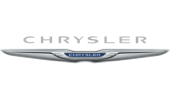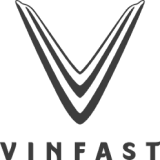Flexible Car Loans for Newcomers
We know a vehicle offers freedom, flexibility and easy access to the places you need to go. A car is especially important to newcomers looking to settle in a new country. That’s why we offer convenient and flexible financing options to help you buy your first car in Canada.
No Canadian credit history requiredlegal disclaimer 1
You may be eligible for an RBC car loan even if you have no Canadian credit history.
Financing terms up to 96 months available
Take up to 96 months to repay your loan – financing is available up to $75,000.
RBC financing available at over 4,500 dealerships
Finance a new or used vehicle up to 10 years old right at the dealership.
Enjoy flexible repayment options
Pay monthly, semi-monthly, bi-weekly or weekly. There’s no penalty to pay off your loan early.
No Canadian credit history requiredlegal disclaimer 1
You may be eligible for an RBC car loan even if you have no Canadian credit history.
Financing terms up to 96 months available
Take up to 96 months to repay your loan – financing is available up to $75,000
RBC financing available at over 4,500 dealerships
Finance a new or used vehicle up to 10 years old right at the dealership.
Enjoy flexible repayment options
Pay monthly, semi-monthly, bi-weekly or weekly. There’s no penalty to pay off your loan early.

Car Loan Calculator
Take a minute to estimate your monthly car loan payments.
RBC Car Loan Calculator (opens in new window)Four Steps to Buying a Car
in Canada
Canadian Driving Requirements
Ensure you have a valid driver’s license:
To legally drive in Canada, you’ll need a valid driver’s license. In some provinces, it is strictly required to have a Canadian license – in others, you may be able to drive with your International Driving Permit. Check with the government of your province or territory (opens external site in new window) for details.
Purchase car insurance:
You are required to have car insurance coverage before you drive away with your new car. It’s easy to buy at insurance companies by phone or online, or through the dealership. Generally, insurance is purchased after you buy your vehicle, as the vehicle details will be needed.
Register your vehicle:
This must be done shortly after your purchase at a provincial service office. Dealers will often do this for you, so be sure to clarify with your dealership.
Choosing a Vehicle
When buying a vehicle, it’s a good idea to think about what you need – and want – out of a car. Visit car-buying and dealership websites to compare features, pricing and consumer reviews of vehicles so you can narrow down your choices before you start shopping. Here are some things to consider:
-
Size:
How many people will you typically be driving? -
Type:
Do you need a vehicle that handles tough road conditions?
-
Features:
Are there specific safety, aesthetic or navigational features that are important to you? -
Cost:
What’s your car-buying budget? Try our quick calculator to estimate your car loan payments (opens in new window)
Should You Buy a New or Used Car?
One of the first decisions you will likely need to make is whether to buy a new or used car. Your choice will depend on your budget, needs and personal preferences. Here is a breakdown of key differences.
| Category | New | Used |
|---|---|---|
| Where to buy | Can be purchased directly from dealerships or manufacturers. | Can be purchased from dealerships, private sellers and online marketplaces. |
| Payment | Can be leased, financed, or bought outright. | Financing is available on most vehicles and select vehicles can be leased. Can also be bought outright. |
| Price | More expensive than used. Manufacturers may have incentive programs. |
Prices for the same car can fluctuate. |
| Warranty | Normally includes a factory warranty including bumper-to-bumper coverage and roadside assistance. | Unless it’s a certified pre-owned vehicle, you may wish to purchase an extended warranty. |
| Features | Will include the most up-to-date technology, features and options. | Technology will be older and possibly obsolete. May not integrate with smartphones. |
| Financing | Lower financing rates compared to used vehicles. | Higher financing rates compared to new vehicles. |
Buy or Lease?
In Canada, people typically borrow money to buy a vehicle. Two of the most common financing options are taking out a loan or signing a lease.
With a loan, you can borrow up to 100% of a vehicle’s purchase price. When the loan is paid off, you own the car. When you lease a car, once the lease is complete, the car is returned to the dealership.
Here is a breakdown of the main differences between these two options:
| Category | Buy | Lease |
|---|---|---|
| How to apply |
You can get your car loan where you buy your car – you can apply for an RBC car loan at over 4,500 dealerships.
For Private Sale loans, you can secure a personal loan directly with RBC or a lender of your choice. |
Leases are offered at leasing companies or can be arranged directly at the dealership. |
| Duration | Car loans are available for terms of 1 – 10 years. | Car leases are generally 3 – 4 years but can be as short as 2 years and as long as 5. |
| Ownership | You own the vehicle after all loan payments are made. | The leasing company owns the vehicle. When the lease is over, you return the vehicle or may have the option to buy it out. |
| Mileage | Kilometers are unlimited. | Your lease contract will come with a kilometer limit. |
| Payment Options | You can pay off the loan early without penalty. | You will need to pay termination fees if you end the lease early. |
| Maintenance | Repairs for wear-and-tear are the responsibility of the car’s owner. | There may be additional fees charged to you at the end of the lease for wear-and-tear on the vehicle. |
| Other Considerations |
You may be eligible for a loan with no Canadian credit history.
A car loan may be a good option if you plan to drive your car a lot or want to keep it for five years or longer. |
A lease may be a good option if you want to get a new car every two or three years. |
Special Financing Rates Available with These Featured Manufacturers















How to Apply for a Car Loan?
Ask for financing at over 4,500 dealerships.
- Test drive a new or used car
- Apply for financing onsite
- Visit any of our trusted partner dealers
- Discover dealer incentives
Frequently Asked
Questions
Unfortunately, no. International students would have to apply under the newcomer auto loan program.
The table below outlines income and employment verification requirements for newcomers:
| Program | Verification Requirements |
|---|---|
| Permanent Resident Program | Proof of income is required. |
| Investor Class Permanent Resident Program |
Proof of income is only required if the amount to finance exceeds $100,000. Note: Proof of employment is not required. |
| Temporary Resident with a Work Permit Program | Proof of income and employment are required, including an employment contract or letter of employment containing salary, position title and work arrangement details. |
A minimum down payment of 15% of the financed amount is required on applications.
Visit a participating dealership and ask for an auto loan with RBC for a car, electric vehicle (EV), RV, or marine vehicle. Find an RBC partner dealership near you (opens in new window).
You must apply for the RBC Cash Back Mastercard by January 31, 2026, at an RBC Royal Bank branch, and be approved by us. You will earn an additional $10.00 back for every $100.00 (10% Cash Back Credit) in Net Purchases (including pre-authorized bill payments) charged on your RBC Cash Back Mastercard account within the first 3 months of account opening, up to a maximum total combined spend of $2,000 (“Welcome Bonus”). Thereafter, the standard Cash Back Credit earn rates of up to 2% on Grocery Store Purchases and up to 1% on other Net Purchases (that are not Grocery Store Purchases) apply. The Welcome Bonus is in addition to the standard Cash Back Credit earn rates. Cash Back Credits are not earned on cash advances (including balance transfers, cash-like transactions and bill payments that are not pre-authorized charges that you set up with a merchant), interest charges or fees, and credits for returns and adjustments will reduce or cancel the cash back credits earned by the amounts originally charged. The Welcome Bonus will appear on your next monthly statement after it was earned, and will be credited as set out in disclosure 35 (below). For complete details on the RBC Cash Back Program including standard earn rates and crediting of Cash Back Rewards, please refer to the RBC Cash Back Program Terms and Conditions at www.rbc.com/cashbackterms (PDF opens in new window). Offer applies to new RBC Cash Back Mastercard accounts only.
One offer per eligible account. Existing cardholders of any RBC personal credit card, applying for or transferring to an RBC Cash Back Mastercard card, are not eligible for this offer. This offer may not be combined or used in conjunction with any other offer except as otherwise set out. Royal Bank of Canada reserves the right to modify, cancel or withdraw this offer at any time. This offer may be revoked at any time if we suspect you may be manipulating or abusing it, or engaging in any suspicious or fraudulent activity, as determined by Royal Bank of Canada in its sole discretion.
“Eligible Personal Client” means a client who meets all of the following conditions:
- Is a newcomer to Canada having arrived in Canada within the last five years of the date an Eligible Personal Banking Account is opened. Must show proof of entry into Canada and provide supporting documents such as landing papers or permanent resident card;
- Is a resident of Canada and is of the age of majority in the province in which they reside as of the date that an Eligible Personal Banking Account is opened. Residence is determined by the jurisdiction (province or territory) where a person has their primary tax filing obligation based on their regular place of residence; and,
- Does not have an existing Personal Banking Account with us.
Must be enrolled in RBC Online Banking or the RBC Mobile app and have either a Canadian RBC Royal Bank chequing or savings account. Some restrictions may apply. Cannot send funds from a US dollar account, the RBC High Interest e-Savings account, or Foreign Currency Accounts.


